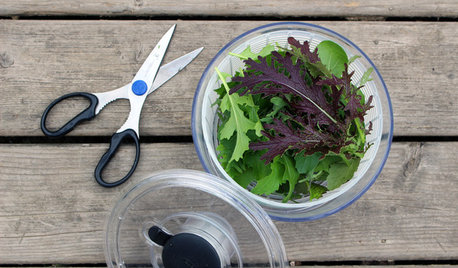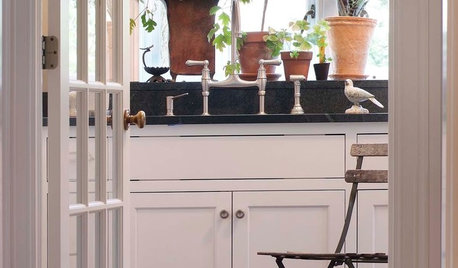Help Needed with Repot/Pruning
deburn
13 years ago
Related Stories

GARDENING GUIDESGot Frost-Damaged Plants? How It Happens, and When and How to Prune
Crispy brown leaves are a sure sign that Jack Frost has been to your neighborhood
Full Story
WINTER GARDENINGPruning Secrets for Exquisite Roses
Encourage gorgeous blooms year after year with this time-tested advice on how to prune your rosebush in winter for health and shape
Full Story
GARDENING GUIDESHow to Prune Your Flowering Shrubs for the Best Blooms
Less is often more when it comes to properly pruning flowering shrubs. Here’s what to do and why
Full Story
LANDSCAPE DESIGNNative Plants Help You Find Your Garden Style
Imagine the garden of your dreams designed with plants indigenous to your region
Full Story
FARM YOUR YARDThe 8 Tools That Help Bring the Farm to Your Table
Vegetable gardeners get a big assist from these essential helpers
Full Story
WINTER GARDENINGHow to Help Your Trees Weather a Storm
Seeing trees safely through winter storms means choosing the right species, siting them carefully and paying attention during the tempests
Full Story
LIFEYou Said It: ‘Put It Back’ If It Won’t Help Your House, and More Wisdom
Highlights from the week include stopping clutter from getting past the door, fall planting ideas and a grandfather’s gift of love
Full Story
HEALTHY HOMEDecorate With Intention: Let Your House Help You De-Stress
Break free of automatic TV time and learn how to really unwind and recharge with these easy ideas that don't cost a dime
Full Story
FUN HOUZZ14 Things You Need to Start Doing Now for Your Spouse’s Sake
You have no idea how annoying your habits at home can be. We’re here to tell you
Full StoryMore Discussions










treeguy123
treeguy123
Related Professionals
Citrus Heights Landscape Architects & Landscape Designers · Waunakee Landscape Architects & Landscape Designers · Newcastle Landscape Architects & Landscape Designers · Belmont Landscape Contractors · Centereach Landscape Contractors · Desert Hot Springs Landscape Contractors · Gresham Landscape Contractors · Paso Robles Landscape Contractors · South Lake Tahoe Landscape Contractors · Wheat Ridge Landscape Contractors · Shafter Landscape Contractors · Crestview Interior Designers & Decorators · Gloucester City Interior Designers & Decorators · Van Wert Interior Designers & Decorators · Livingston HandymandeburnOriginal Author
gravyboots
deburnOriginal Author
rhizo_1 (North AL) zone 7
tapla (mid-Michigan, USDA z5b-6a)
Horticultural Help
tapla (mid-Michigan, USDA z5b-6a)
deburnOriginal Author